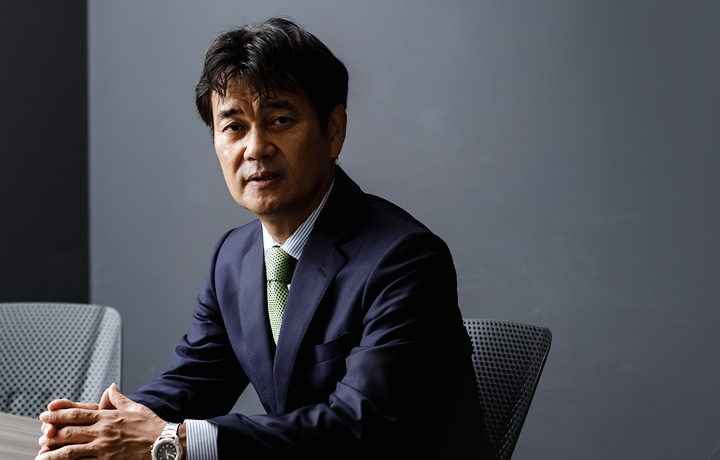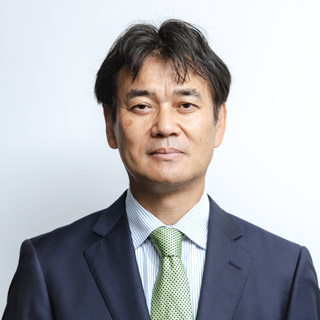Offshore wind power generation is widely recognized as a pivotal element in achieving carbon neutrality goals. Chiba University, along with five universities and five power generation companies, is participating in the ‘Offshore Wind Higher Education Program by Industry-Academia Consortium.’ This program, supported by a government-funded initiative known as the ‘Offshore Wind Power Human Resource Development Program,’ aims to develop an educational curriculum for offshore wind power. We interviewed Professor Masahiro Takei of the Graduate School of Engineering and Vice President for Research and Industry-Academia Collaboration to learn how Chiba University plans to contribute to cultivating expertise in this field.
Curriculum development to cultivate future experts in advancing offshore wind power
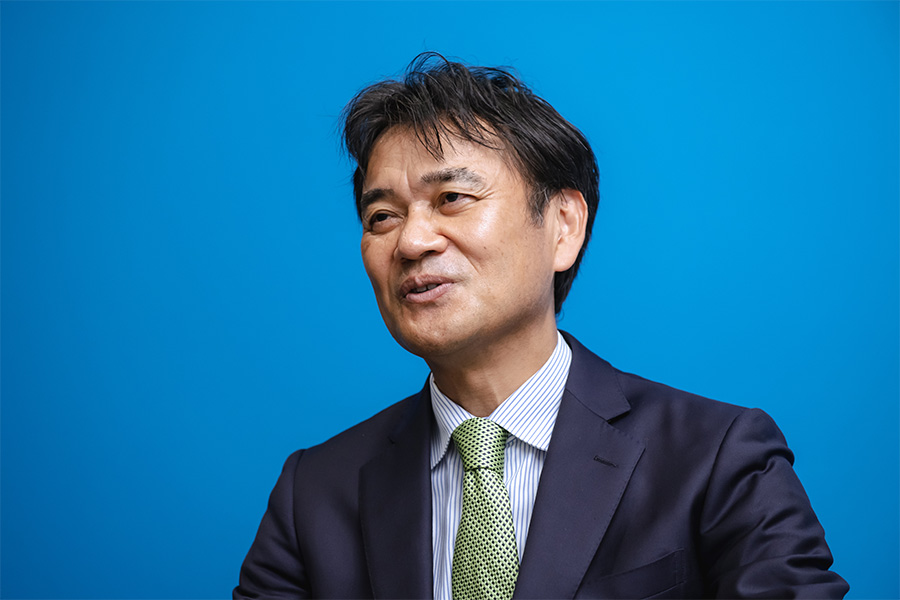
―Please provide insights into offshore wind power generation. What are the reasons for its growing prominence?
Offshore wind power generation is an innovative solution that holds the potential to solve energy challenges and serve as a pivotal component of the primary renewable energy mix, steering us toward achieving carbon neutrality by 2050. While wind power is already used across coastal and mountainous areas, offshore locations offer consistently stronger and more stable wind conditions than land-based sites. Furthermore, the expansive ocean environment allows for the construction of larger wind farms, resulting in increased power output.
Europe has made significant strides in advancing offshore wind power generation and is positioned to make it a substantial energy contributor. Given Japan’s coastal geography, it’s an ideal candidate for offshore wind power generation. As of May 2023, the three prefectures, Nagasaki, Akita, and Chiba, have been designated by the Ministers of Economy, Trade and Industry, and Land, Infrastructure, Transport and Tourism as areas for promoting offshore wind power generation, signifying a promising direction.
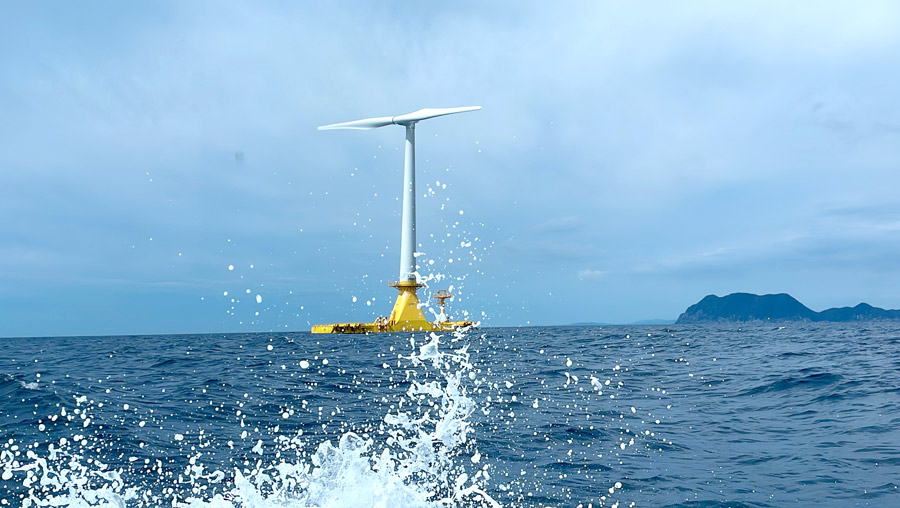
―Please tell us about the project selected for the “Offshore Wind Power Human Resource Development Program.”
In our initiative to shape an educational curriculum for offshore wind power specialists, Nagasaki University has taken the lead in establishing a collaborative consortium, which includes Chiba University, Akita University, Akita Prefectural University, Kitakyushu City University, and five power generation companies*.
*Kyuden Mirai Energy Company, Incorporated, Mitsubishi Corporation Offshore Offshore Wind Ltd., JERA Co., Inc., Tokyo Electric Power Company Holdings, Inc., Chubu Electric Power Co., Inc.
Recognizing that achieving enduring and stable growth in offshore wind power generation requires more than just its realization, the consortium is focused on cultivating diverse talents. These individuals need to possess specialized expertise and hands-on practical skills, including energy management and regional revitalization, crucial for the business development of offshore wind power. This consortium’s primary objective is to devise a comprehensive curriculum through industry-academia collaboration, aimed at nurturing those proficient individuals.
Leveraging expertise in regional revitalization and entrepreneurship education
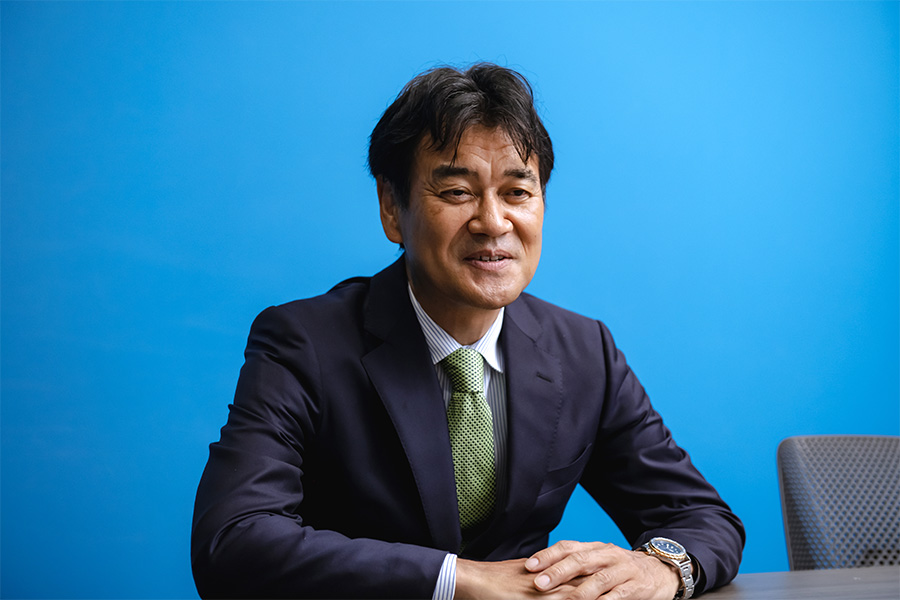
―What endeavors have the consortium undertaken so far?
Initially, the consortium consolidated a comprehensive review of the ideal qualities sought in candidates for the university education curriculum. A consensus was reached through ongoing discussions among the five universities and five business entities, each with distinct locations, backgrounds, and cultures: the paramount goal is to nurture individuals capable of steering future offshore wind power projects as project managers.
Specifically, these individuals possess basic knowledge across the entire offshore wind power field, encompassing technology, finance, legal affairs, and regional cooperation. To facilitate regional revitalization, the cultivation of interdisciplinary networks and the proactive advancement of projects become essential. Moreover, given Europe’s leadership in offshore wind power generation, a proficiency in international communication aligned with the global market is imperative. Naturally, we are also committed to fostering individuals with profound academic expertise and a pioneering spirit, contributing to advancing the offshore wind power industry through innovative approaches.
Additionally, in line with our collaborative efforts, we are exploring opportunities to launch joint courses that harness the strengths of each university, enhancing industry-academia collaboration. This proposal is currently under discussion.
―What are Chiba University’s strengths in this talent development initiative?
Chiba University’s strengths lie in regional revitalization and entrepreneurship education. Our goal extends beyond cultivating future leaders solely for offshore wind power generation; we are committed to fostering a diverse range of talents in the broader energy sector, such as carbon neutrality and regional energy management.
In addition to the consortium-led talent development project, our university is embarking on a distinctive initiative. We plan to investigate and analyze the creation of an ideal grand design for the Choshi offshore zone—a designated area for promoting offshore wind power generation. This endeavor involves engaging in dialogues with business operators and members of the Choshi commercial district. Collaborating with faculty members from the humanities and social sciences enriches the discussions, allowing us to leverage the university’s comprehensive knowledge. Based on this initiative, we are exploring possibilities such as revitalizing communities or attracting startup companies.
Visualizing the invisible flow
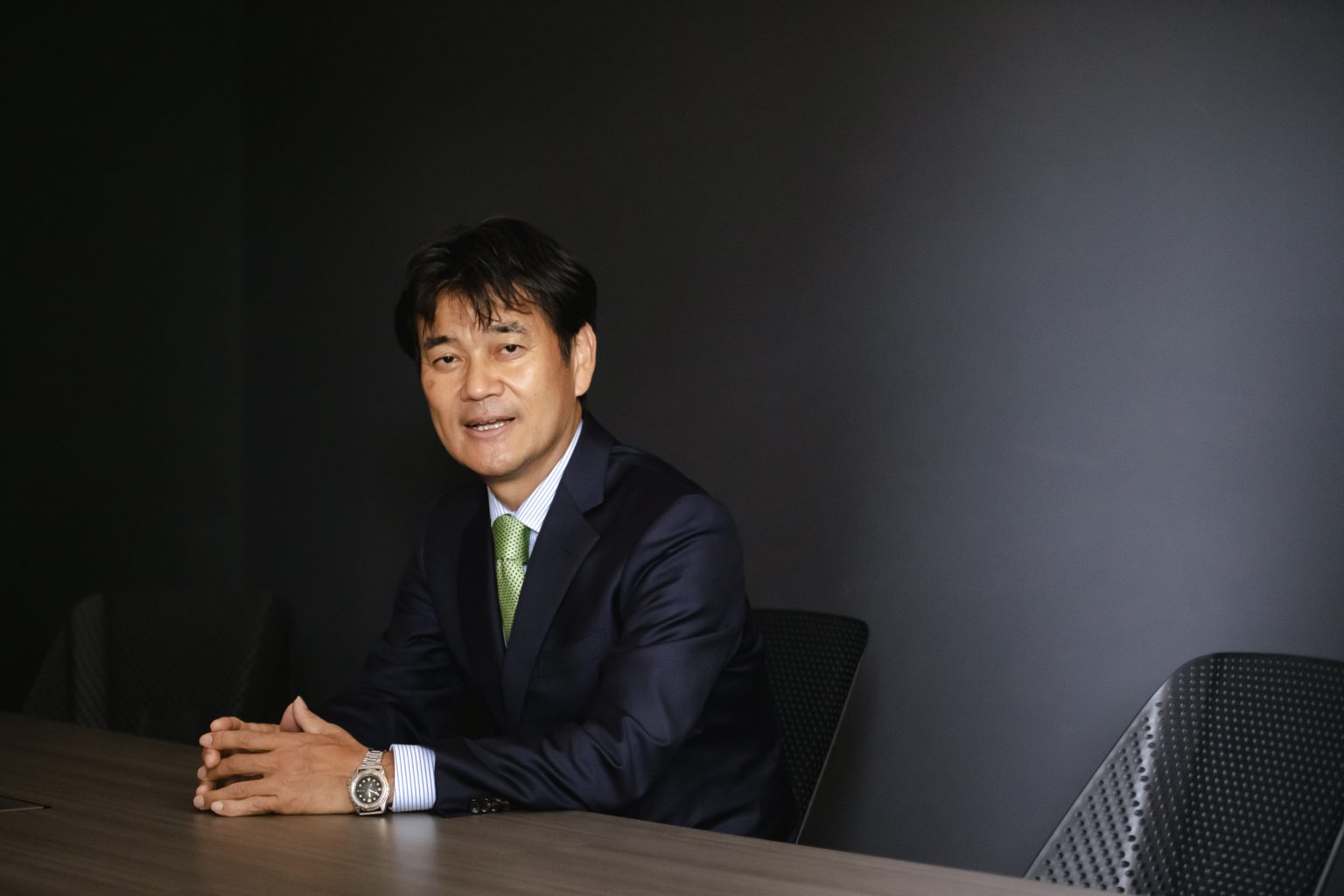
―From now on, please tell us about your research as a Graduate School of Engineering professor. What is your research focus?
Based on the concept of “Making the ‘invisible’ ‘Visible,’” my focus is on developing visualization technology that utilizes light and electricity to make invisible water and air flow visible. This endeavor encompasses fluid mechanics and, moreover, aims to foster innovation within the industrial world.
For example, though wind is invisible to the naked eye, it can be visualized through various devices. Around a decade ago, I actively engaged in wind power generation research, collaborating with the late Dr. Tsuneo Noguchi and Dr. Masaaki Honda. Our efforts centered on visualizing pressure and velocity distributions around the blades of a novel vertical-axis (Gyro-mill Type) wind turbine intended for terrestrial use. We employed Particle Image Velocimetry (PIV), a fluid measurement method, to develop a 4D visualization measurement technology that spans 3D space and time. The data obtained from 4D-PIV contributed to the performance improvement of the “Cygnus Mill,” featuring innovative airfoil blades.
Due to its distinctive airfoil shape, “Cygnus Mill” achieves both drag and lift, enabling efficient rotation. This design allows it to initiate rotation even at low wind speed and generate high rotation torque, ensuring stable power generation. The Cygnus Mill’s technology has been transferred to a private company and successfully integrated into society.
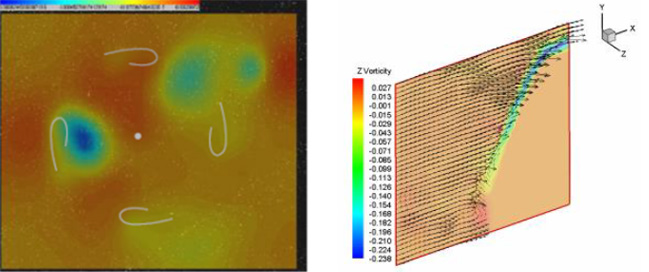
Source: PIV measurement around vertical axis wind turbine with wing section which has cutout trailing edge
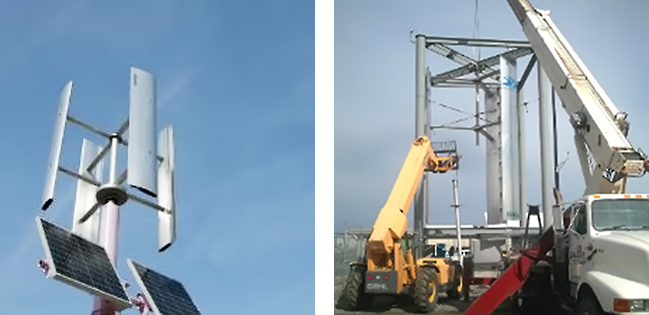
―What type of visualization technology are you currently engaged in?
I am focused on utilizing a technology called electrical tomography* to achieve ultra-fast and multi-dimensional visualization of the fluid flow, such as gases and liquids, within materials. This research spans a wide spectrum, encompassing the visualization of fluids in various contexts. From large-scale entities like rotating machinery and industrial plants (shown in the left photo) to microscopic elements such as blood vessels and cells (shown in the right photo), I am adept at visualizing fluids in diverse fields.
In line with this technology, I am in the process of developing a medical device designed to detect lymphedema symptoms swiftly and non-invasively. This involves employing wearable sensors to measure water and protein levels during the early stages of the condition. The resulting diagnostic information can then be intuitively displayed on a smartphone or specialized device, greatly surpassing the conventional hospital-based tests. This approach is remarkably user-friendly and minimally intrusive, enabling individuals to conduct the assessments from the comfort of their homes.
With the generous support of the Japan Science and Technology Agency (JST), our laboratory team is collaboratively working towards the goal of commercialization and entrepreneurship within a two-year timeframe.

Guided by the motto “How to Teach in an Easy-to-Understand Mannar”
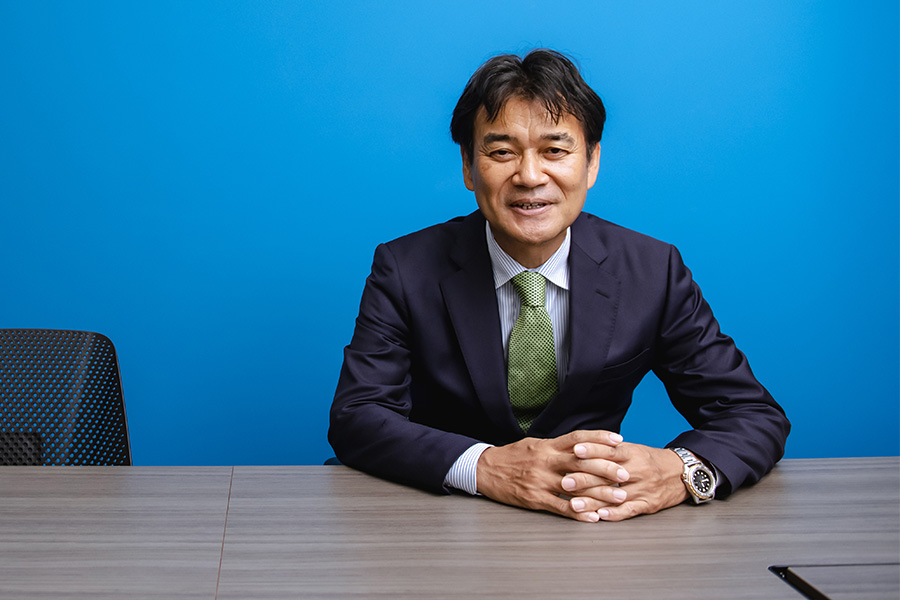
―What prompted your interest in fluid dynamics?
Embarrassingly, during my university days, I ended up submitting a report for a certain class right at the last minute. Upon delivering it directly to the professor’s office, it seemed that I was perceived as an enthusiastic student. This interaction led to further engagement with the professor, whose expertise coincidentally lay in fluid dynamics research. As I continued assisting with experiments in his laboratory, my curiosity for fluid dynamics research grew, ultimately driving me to pursue it as my specialty.
Upon embarking on the study, I encountered significant difficulty comprehending the mathematics necessary for fluid analysis. Historically, university professors (and perhaps even today) tended to teach complex mathematics in a challenging manner. Therefore, I have always prioritized approaching the task of teaching intricate mathematics and physics with simplicity. I have authored numerous textbooks and study-aid books, including ‘Learning Fluid Mechanics through Manga’ published by Ohmsha, Ltd., and recently received the “Kanto Society for Engineering Education Association Award (Book Award).”
In my view, adopting the motto of ‘easy to understand’ and instructing from the perspective of the customer (learners) are of utmost importance in fostering talent and effective management.

―Finally, please share with us the distinctive features of research endeavors at Chiba University
Like this consortium, Chiba University is deeply committed to fostering collaborations between academia and industry. Personally, I hold the dual roles of professor and vice president, contributing not only to research but also to the effective management of industry-university partnerships. We have established an environment that facilitates the growth of both faculty members, empowering them to refine their research and management skills while collaborating with other academic institutions and companies. Chiba University serves as an enticing platform for individuals with aspirations for carbon-neutral research and transformative technology development, with a focus on engaging a diverse spectrum of participants.
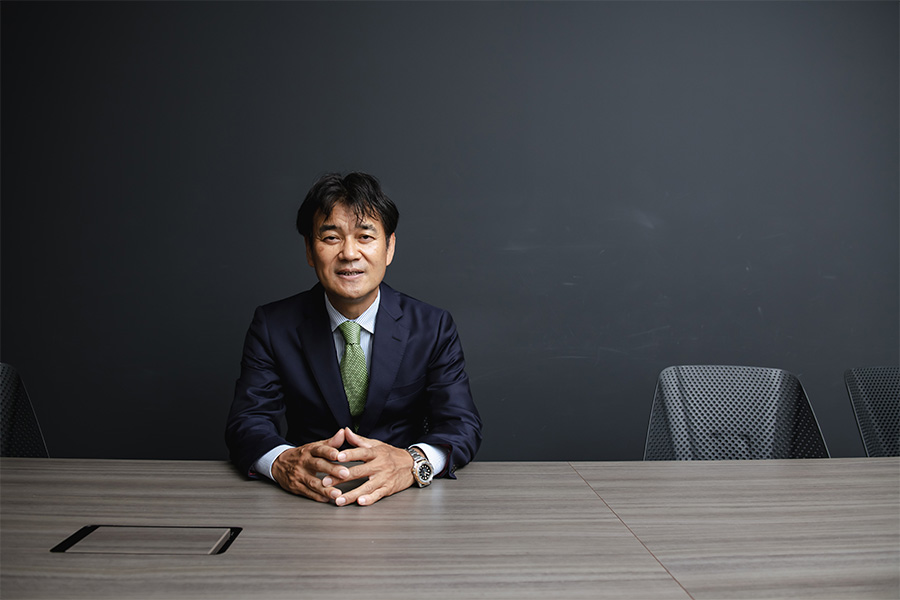
Series
The Role of Universities to Achieve Carbon Neutrality
What role should universities play in realizing carbon neutrality by 2050? This series will explore this question, accompanied by research conducted at Chiba University.
-
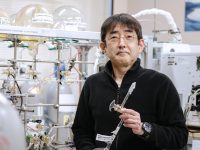
#1
2023.06.22
Harnessing CO2 with a Photocatalyst for Fuel and Plastic Feedstocks: Advancing a Sustainable Society with Chemistry
-

#2
2023.06.29
Unlocking Untapped Urban Resources: Driving Carbon Neutrality through Life Cycle Assessment
-
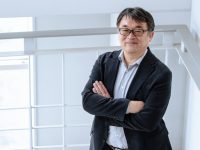
#3
2023.07.04
Predicting Future CO2 Absorption and Emissions in Terrestrial Ecosystems: International Geostationary Meteorological Satellite Network for Accurate Estimation
-
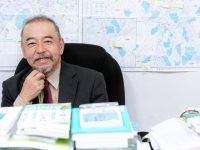
#4
2023.07.12
The Global Goal of Carbon Neutrality by 2050 (Part 1): Universities as Agents of Change
-

#5
2023.07.14
The Global Goal of Carbon Neutrality by 2050 (Part 2): A decarbonized society from a local perspective
-
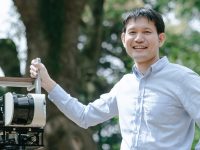
#6
2023.09.12
Reassessing the role of “Forest Resources” in achieving carbon neutrality: Measuring forests with the combination of drones, mathematics, and computer graphics
-
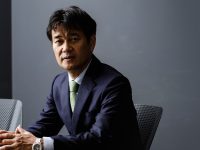
#7
2023.09.28
Navigating Offshore Wind Power Expansion: Nurturing Ocean-based Wind Energy Management Experts through Industry-Academia Partnership
Recommend
-
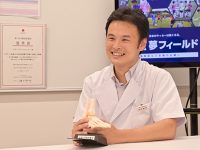
A Day in the Life of a Sports DoctorProfessionals behind the world’s most prominent sporting events
2023.04.13
-

Predicting Future CO2 Absorption and Emissions in Terrestrial Ecosystems: International Geostationary Meteorological Satellite Network for Accurate Estimation
2023.07.04
-
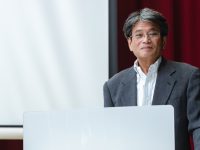
Live on the Moon, Settle on Mars: Research Center for Space Agriculture and Horticulture for Space Food Production and Supply
2023.10.20



